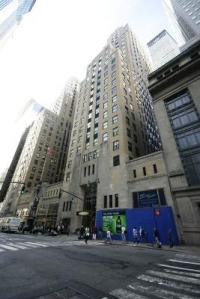In the Zone: Midtown East Rezoning Faces Challenges, Some Warn
By Gus Delaporte April 3, 2013 11:00 am
reprintsCapital requirements and the debate over building preservation are just two of the roadblocks the Midtown East rezoning plan faces on the path to approval, real estate professionals say.
Market participants anticipate a significant review process before any ground is broken, despite the plan’s potential benefits.
“I think it’s a work in progress,” David Greene, principal and president of brokerage services at murray hill properties, told The Commercial Observer. “I think it will, eventually, after lots of public review, have a substantial meaning for the Grand Central area and north.”

The Department of Planning is proposing a zoning strategy for 78 blocks in Midtown East aimed at revitalizing the area’s office buildings, which, on average, are more than 70 years old.
Despite the focus on office space, the potential benefits to pedestrians should not be overlooked, according to Mr. Greene. “People come out of Grand Central and they walk on Vanderbilt and Lexington, and it’s a different experience from what it could be,” he said.
The cost of any potential development needs to be monitored, however. “I think the capital requirements are a real concern,” Mr. Greene said.
The trading of air rights and additional taxation could generate up to $700 million of funding for the plan, according to Mr. Greene. “That may not be enough,” he said. “It’s a big number, but if you’re talking about significant improvements, that money goes pretty quickly.”
Trading air rights will be the most effective way to reach funding goals, added Matt Kasindorf, partner at Meister, Selig & Fein. “The ability to freely transfer air rights has always been a creator of great opportunity,” he said. “The more broad those rights are under the new proposals, the better chance for them to be exploited in a successful way.”
Another issue facing the Midtown East proposal is the push from preservationist groups to landmark many of the market’s buildings. As reported by The Commercial Observer, the Municipal Art Society and others have earmarked a total of 80 buildings for landmark status.
“My clients are very concerned about the types of specific designations that would create roadblocks to utilizing the proposed new development rights,” said Mr. Kasindorf.
Despite the intensive process, the voices of preservationist groups deserve to be heard, according to Mr. Greene. “There has to be a balance, and that may mean added fees, but you can’t just say: ‘Sorry, we are not going to landmark any buildings and your voice doesn’t count,’” he said. “Everyone should be entitled to speak.”
There is no disputing, however, that Midtown East is in need of improvement.
“This part of town needs a good shot in the arm to be revitalized,” Mr. Kasindorf said.
“The whole Grand Central Terminal district is in need of an upgrade,” Mr. Greene agreed. “The whole idea is to attract better tenants and to create jobs.”



